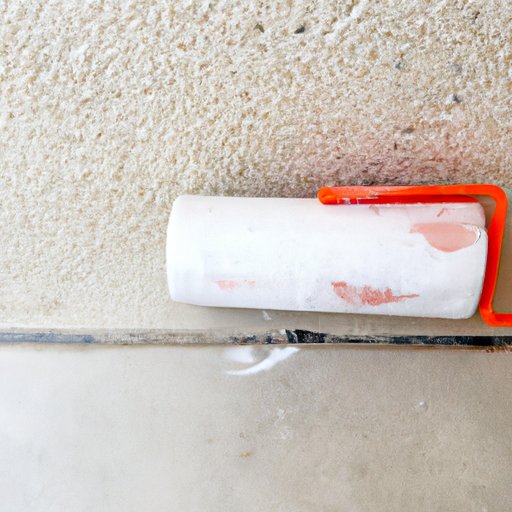
Introduction
Caulking is an important part of home maintenance that can save homeowners money on energy bills and prevent costly water damage. However, for those who have never done it before, caulking can seem like a daunting and mysterious task. This article will provide a complete guide to caulking, including step-by-step instructions, tips for perfecting your technique, and advice on choosing the right type of caulk for the job.
Step-by-step Guide to Caulking Your Home
The materials needed for caulking are relatively simple: caulk, a caulking gun, and a putty knife. The first step is to thoroughly clean the surface that needs caulking, removing any old caulk or debris. Next, insert the tube of caulk into the caulking gun, and carefully cut off the tip of the tube at a 45-degree angle. Hold the gun at a 45-degree angle to the surface and slowly squeeze the trigger while smoothly pulling the gun towards you in a straight line. Use a putty knife or scraper to help smooth out the bead of caulk to ensure that it is even and professional-looking. Allow the caulk to cure for at least 24 hours before painting.
Types of Caulks and Their Uses
There are several different types of caulks on the market, each with their own attributes and best uses. Silicone caulk is known for its flexibility and is a good choice for areas that will be exposed to water, such as around sinks and showers. Acrylic caulk is an affordable choice that is easy to apply and paint over, making it a good option for interior work. Butyl rubber caulk is a good choice for exterior surfaces that will experience a wide range of temperatures, as it is resistant to both heat and cold. When choosing a caulk, it is important to consider the surface that it will be applied to and the environment it will be exposed to.
Tips and Tricks for Perfecting Your Caulking
One great tip for perfecting your caulking technique is to use a scrap piece of cardboard to smooth out the bead of caulk after applying it to the surface.With tricky surfaces, such as corners or angles, it can be helpful to use masking tape to create a straight line. And when removing old or damaged caulk before applying new caulk, make sure to use a caulk-removal tool to be sure that you have completely removed all old caulk.
Common Caulk Mistakes and How to Avoid Them
One common mistake when caulking is using too much caulk, which can make a mess and lead to pilling. It’s also important to apply the caulk evenly to ensure a professional finish. To avoid these mistakes, try cutting the tip of the caulk tube at an angle to create a smaller opening, which will help you to apply the caulk more precisely. And don’t forget to practice your technique on a spare piece of wood or cardboard before tackling your final project.
Using Caulk to Save Energy
Aside from its aesthetic benefits, caulking can be an important part of energy-efficient home maintenance. By sealing gaps and preventing leaks, caulk can help to reduce energy bills and keep homes warm in the winter and cool in the summer. To get the most bang for your buck, consider using a high-quality caulk, such as silicone, and applying it around windows, doors, and other areas where drafts might be coming in.
DIY vs. Hiring a Professional Caulker
When it comes to caulking, the decision to hire a professional versus doing it yourself will depend on the scope of the project and your own comfort level with DIY home projects. While hiring a professional will ensure that the job is done quickly and efficiently, it will also come with a higher price tag. If you decide to go the DIY route, be sure to research the best products and techniques and take your time to ensure a professional-looking finish.
Conclusion
Caulking is an important and often-overlooked part of home maintenance that can help prevent costly damage and improve energy efficiency. With the tips and techniques outlined in this article, you can tackle caulking projects with confidence and achieve professional-looking results. If you are still unsure about tackling the job yourself, consider hiring a professional caulker to ensure that the job is done correctly.





